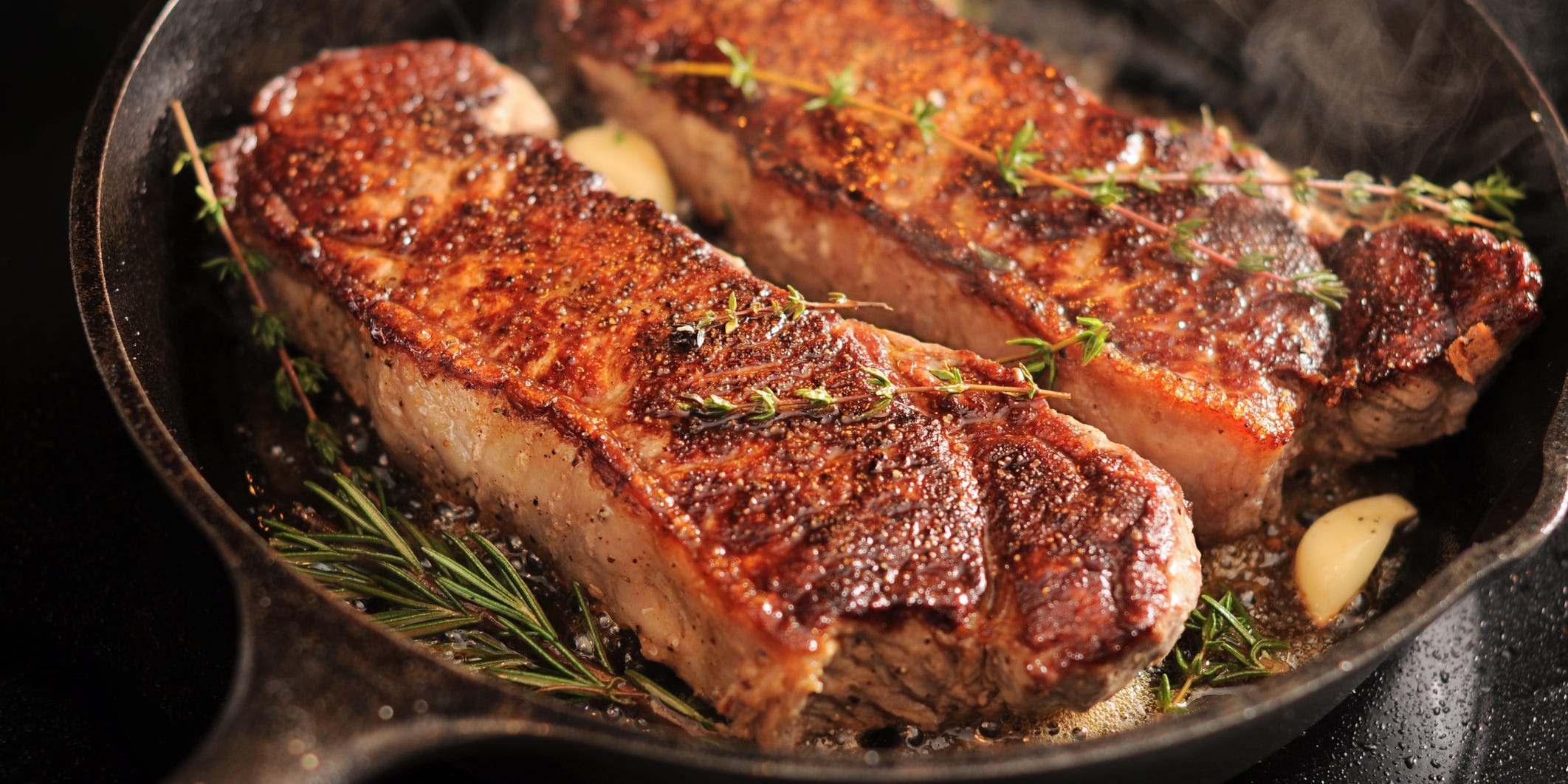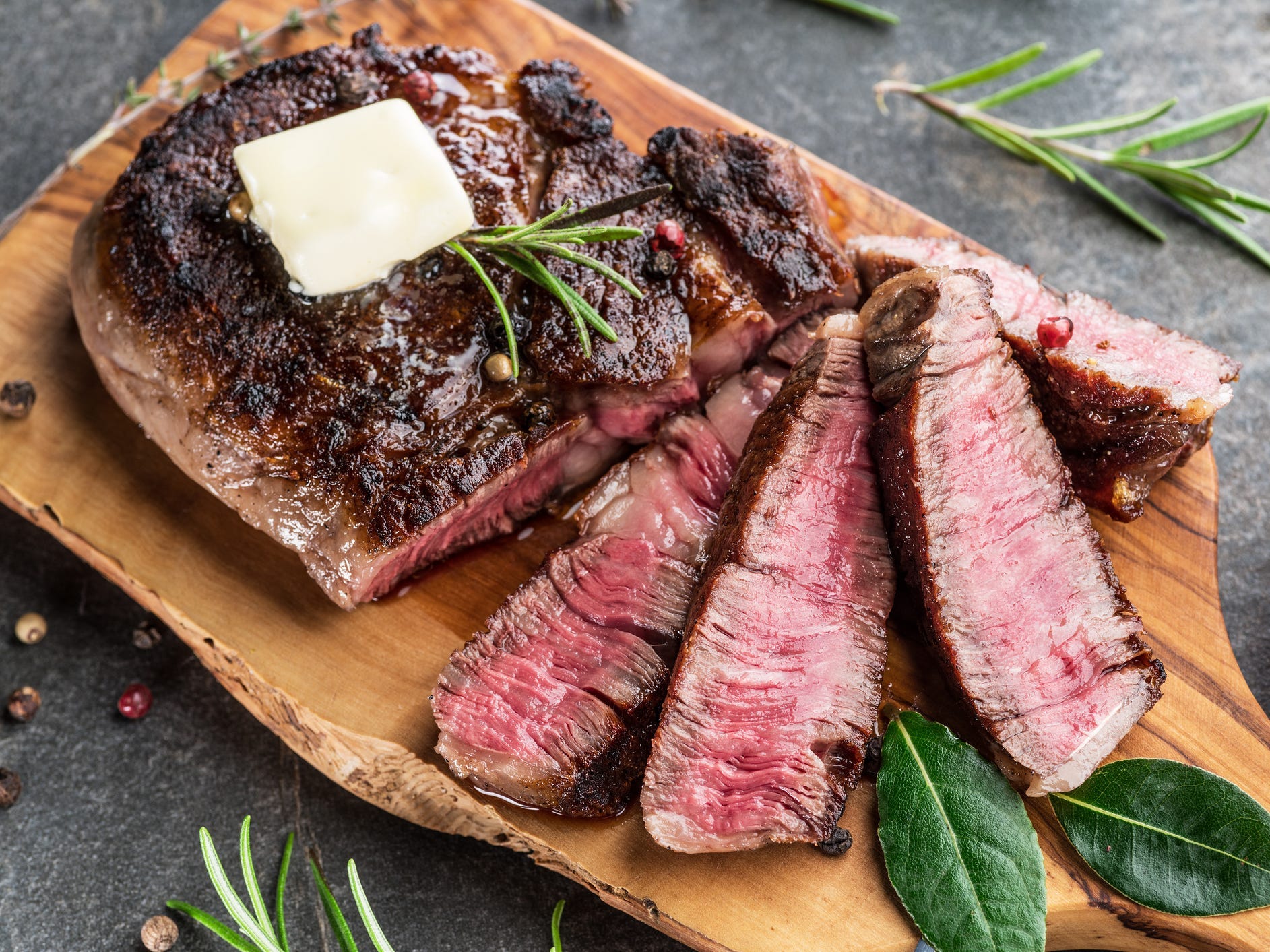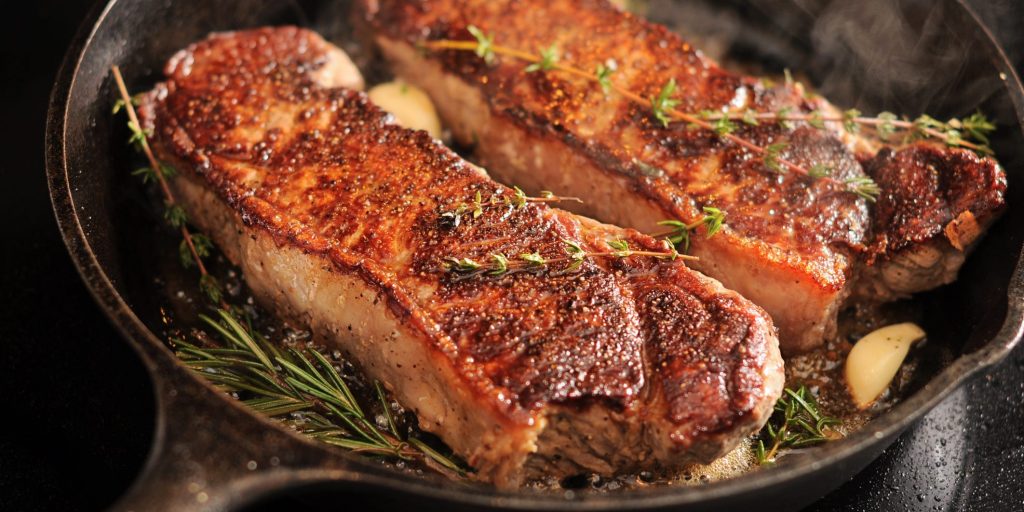
jjpoole/Getty Images
- Reverse searing is the method of baking a steak to your desired doneness and then finishing it in a hot skillet.
- Use this method to encourage even cooking in thick cuts of steak.
- A smoking hot cast iron pan will help you achieve the perfect golden crust.
- Visit Insider's Home & Kitchen Reference library for more stories.
If you're not a seasoned grill master, cooking a steak might be an intimidating task – especially if you're dealing with a large cut of meat.
The reverse-sear method, where the steak is first cooked at a low temperature in the oven and finished over high heat in a hot skillet, is the perfect answer to the problem of gauging doneness and controlling your grill's flame.
"You're looking to achieve an even, uniform internal temperature from top to bottom without overcooking the middle layers of the steak," says Katie Flannery of California's Flannery Beef. "You want the middle to be evenly rosy from edge to edge, with a well-caramelized crust."
Because of the controlled bake and quick contact with a super hot skillet, this method promotes even cooking, gives you better browning, and it's harder to mess up than traditional grilling methods.
How to prep your steak
Take your steak out of the fridge. According to Flannery, let your steak sit at room temperature for 30 minutes before cooking so the center isn't cold.
Set up your baking rig. Prep a foil-lined baking pan with a wire cooling rack set inside to keep the steak lifted so it stays dry.
Don't season yet. While some chefs opt to season the meat at this point, Flannery recommends to wait until the searing step to season the steak.
Tips for achieving a perfectly reverse-seared steak

ValentynVolkov/Getty Images
Use a thick cut of high-quality meat. "I wouldn't reverse-sear steaks that are thinner than an inch, like a boneless ribeye, skirt steak, or flanken-style short ribs," says Flannery. "A steak like a large Bistecca - an Italian style thick-cut porterhouse - is a perfect example of one that does well with a reverse-sear."
Other cuts that fare well with this method are bone-in ribeyes, tomahawks, porterhouse, and any other steaks cut thicker than an inch.
Invest in a meat thermometer. Flannery insists a meat thermometer is an absolute must. It's difficult to gauge doneness simply by time or touch. It doesn't have to be fancy or expensive, and you'll be able to use it on any other meats or poultry you cook regularly.
Cast iron skillets are the way to go. Because of cast iron's ability to achieve and maintain exceptionally high heat, it is the pan of choice for searing meats, in both home and professional kitchens alike.
Don't over-sear. Make sure your pan is super hot and try to get good contact between the meat and pan to achieve the best browning possible, but don't overdo it trying to get a dark crust. Your steak is already most of the way cooked through, so searing is mainly to create a crispy crust and caramelize the outside. According to Flannery, the longer you sear it, the easier it is to overcook it, and then you've wasted your time.
Insider's takeaway
When dealing with thick cuts of meat, the reverse-sear method will help you achieve even results with fairly minimal effort. With a few simple tools - a baking sheet, rack, meat thermometer, and cast iron skillet - you'll be able to master the art of a perfectly cooked steak in no time. Bake it at a low temperature and then sear it in a skillet for a perfectly browned crust.
